2.889 words, 15 minutes read time in article “Evolution of Hard Techno”.
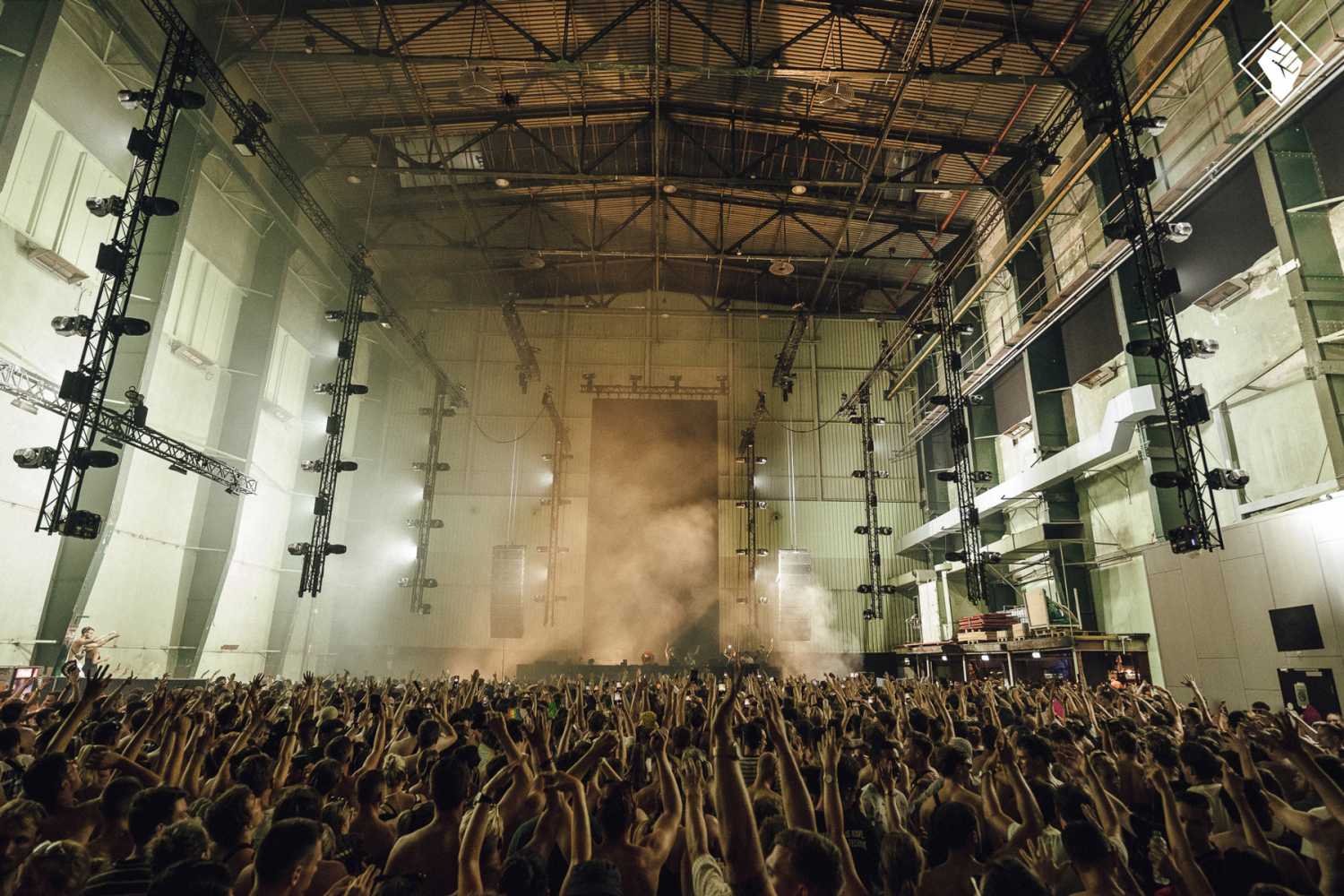
The Evolution of Hard Techno A Quick Definition
Hard Techno emerged in Europe during the 1990s, thriving in underground spaces like bunkers. Germany and Belgium were at the forefront of its rise, shaping a genre defined by rebellious energy. Over the years, it has evolved into a global phenomenon, blending industrial and rave influences while dominating massive festivals.
Quick Overview in The Evolution of Hard Techno
Dive into the fascinating journey of Hard Techno with this comprehensive guide “The Complete Evolution of Hard Techno”, covering:
- The rise of Hard Techno from underground bunkers to global festival stages.
- The key pioneers and technical innovations that shaped the genre.
- How Hard Techno evolved through cultural shifts and global influence.
- Modern trends, including its fusion with hardcore and hardstyle sounds.
Plus, explore exclusive artist quotes, the impact of social media, and what’s next for the genre!
Table of Contents for The Complete Evolution of Hard Techno
The evolution of Hard Techno! from bunkers to festivals!
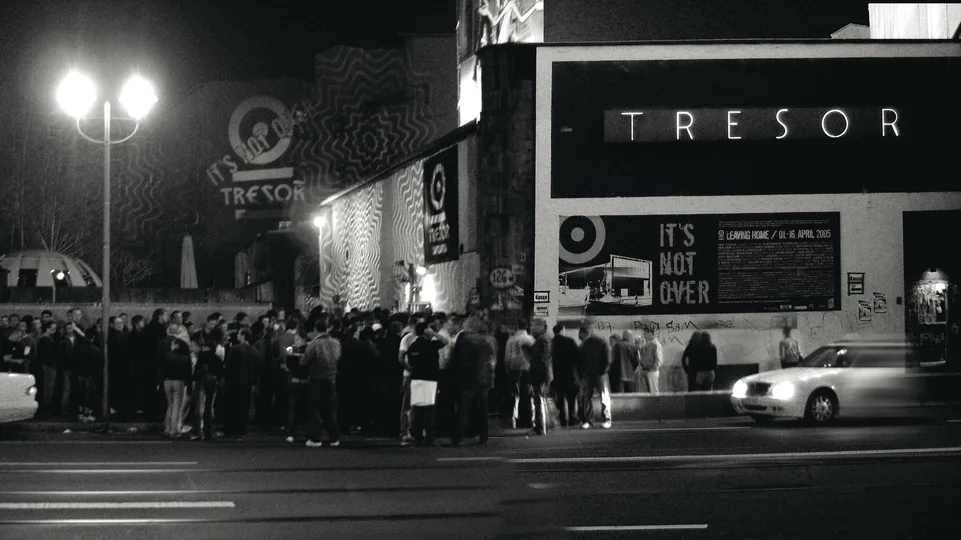
Hard techno has always been a genre that thrives on intensity, rebellion, and raw, unfiltered energy. Emerging from the shadows of underground bunkers and dimly lit warehouses, this pounding, relentless style of music was once the soundtrack to secret raves and countercultural movements. Fast forward to today, and hard techno has broken free from its underground roots to dominate festival main stages, electrifying crowds of thousands around the globe. Its rise is a testament to the genre’s boundary-pushing ethos and universal appeal.
But how did a genre so steeped in grit and rebellion become a global sensation? The journey of hard techno mirrors its music: fierce, relentless, and always evolving. From the birth of its raw, industrial sound in European subcultures to its embrace by mainstream festivals and global audiences, the story of hard techno is one of cultural shifts, influential pioneers, and a growing hunger for harder, faster beats.
In this article, we’ll take a deep dive into the history and evolution of hard techno. We’ll explore its gritty beginnings, the cultural and technological forces that shaped it, and the visionary artists who refused to compromise its intensity. We’ll also look at how hard techno managed to stay true to its underground roots even as it conquered the mainstream.
Get ready to discover how hard techno transformed from a niche underground movement into the thrilling, globally celebrated phenomenon it is today!
The Underground Echo: Where Steel Met Soul
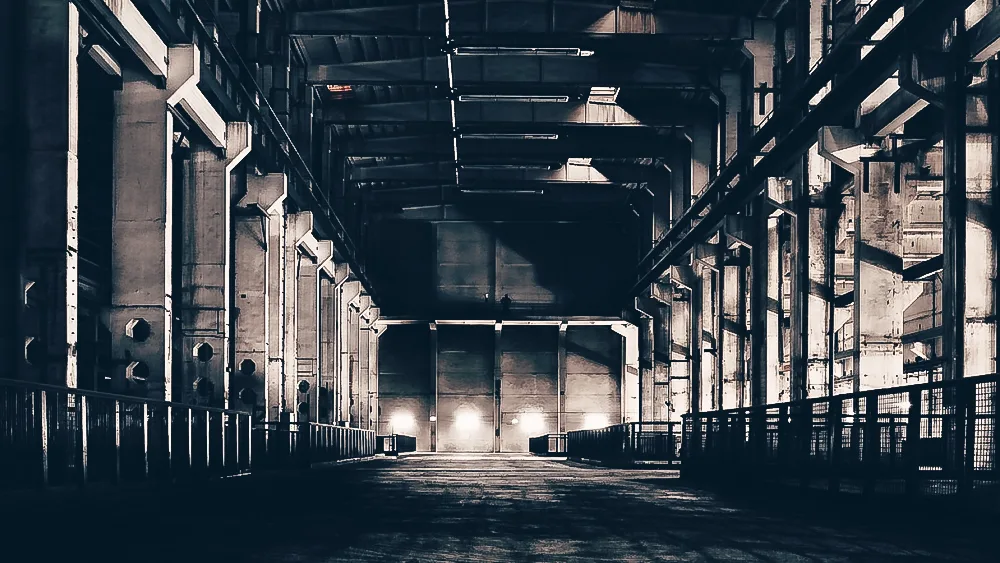
In the early 1990s, amid the crumbling concrete of post-Wall Berlin, something primal was stirring. Hard techno didn’t just emerge, it erupted from the ruins of industrial spaces, where abandoned bunkers became sanctuaries. These weren’t just parties; they were rebellions against the mainstream, powered by raw energy and unfiltered expression.
The scene first took root in places like Tresor, a former department store vault transformed into a temple of techno. Here, in the darkness and dust, pioneers crafted a sound that would shake the foundations of electronic music. The bare walls and exposed pipes weren’t just architecture; they became instruments in their own right, reflecting and amplifying the harsh beats that would define a generation.
These hidden venues were more than just spaces; they were sanctuaries for techno lovers who craved something raw and powerful. This was the beginning of The Evolution of Hard Techno. Hard techno, with its deep, fast beats, and relentless rhythms, became the soundtrack to these gatherings. The genre embraced the raw energy of its surroundings, creating a unique style that resonated with the underground rave culture. Hard techno had found its place in the shadows, where it could thrive.
Techno wasn’t just music; it was a lifestyle, a rebellion against the mainstream, and a community bound by rhythm. The DIY nature of the scene meant that fans organized their own parties, leading to the rise of “bunker raves” and underground events. These gatherings embraced a grittier, harsher sound that stood in stark contrast to the more polished, mainstream music.
Rave culture in the 90s brought together people from all backgrounds, united by their love for hard-hitting, high-energy music. The underground, almost secretive aspect of these raves only added to the allure of hard techno. Attendees found a sense of freedom and identity within these walls, as the genre continued to grow into its own unique movement within electronic music.
Breaking Ground: The Architects
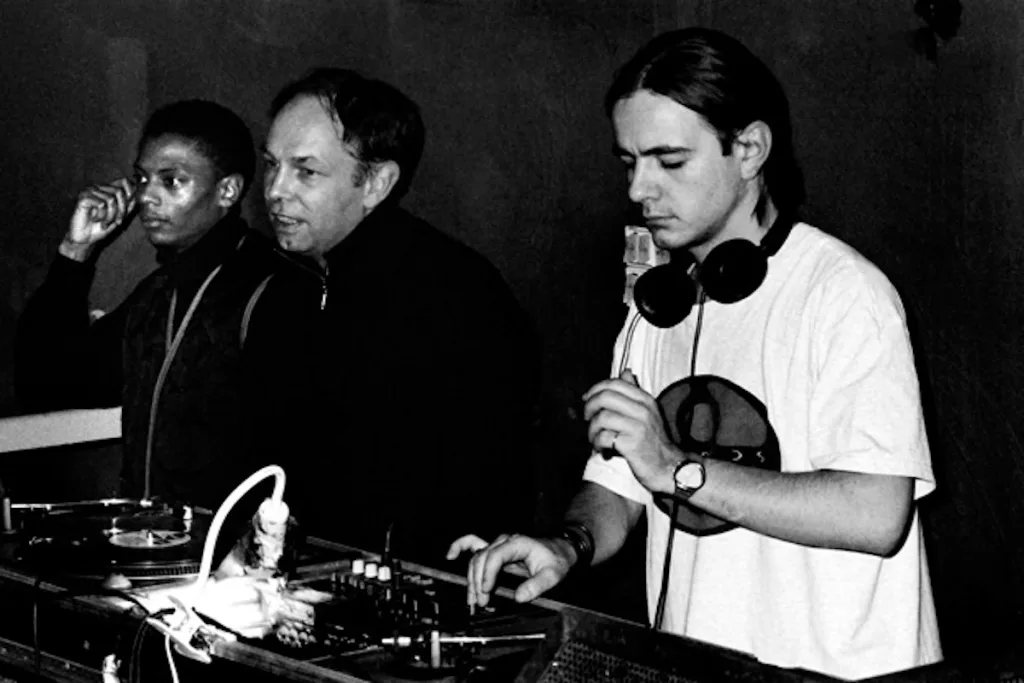
The early architects of hard techno weren’t just DJs they were pioneers. Armed with analog equipment and an insatiable hunger for experimentation, these pioneers pushed boundaries that many didn’t even know existed. The Roland TR-909 became their weapon of choice, its distinctive kick drum cutting through the industrial haze like a hammer on steel.
As the ’90s progressed, more artists joined this underground Evolution of Hard Techno. They brought with them new ideas, techniques, and technologies that would help shape the genre’s signature sound. The result was a perfect storm of creativity, technology, and raw human energy.
The Machine Speaks: Technical Evolution
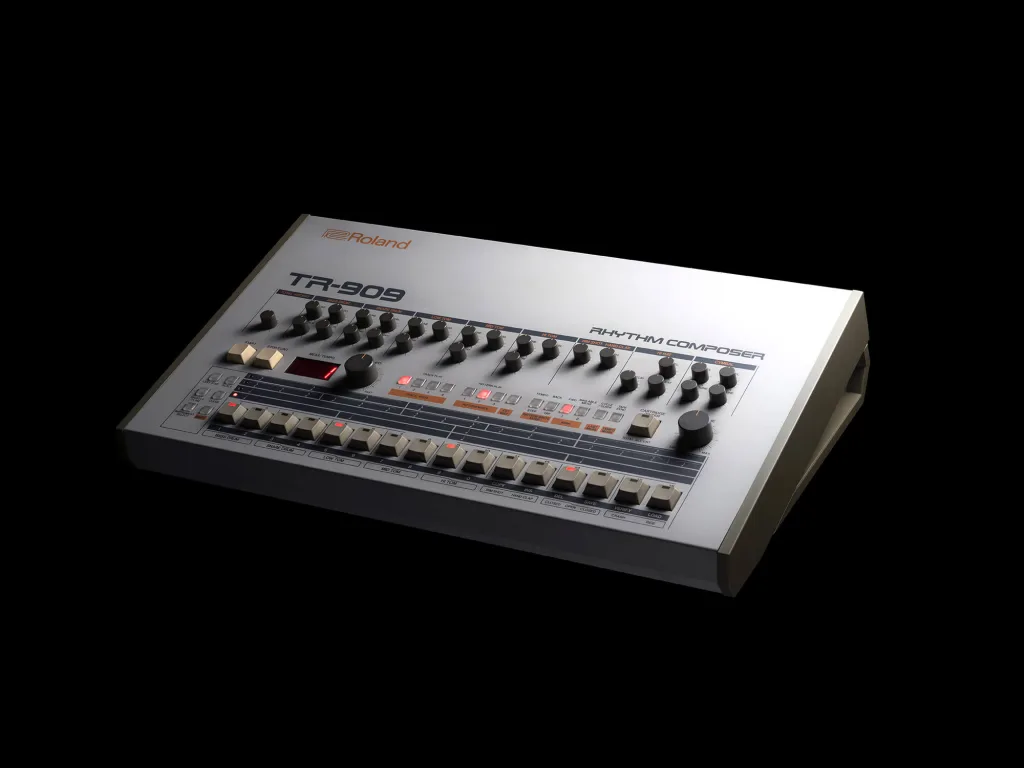
Initially, hard techno was purely an analog affair. Massive mixing consoles, drum machines, and synthesizers dominated the landscape. However, the digital revolution was approaching fast, bringing with it new possibilities and challenges for the genre. Taking agian one step in the Evolution of Hard Techno.
This transition wasn’t always smooth, but it was inevitable. As software began to match and eventually surpass hardware capabilities, producers found themselves with unlimited potential at their fingertips. Yet many chose to maintain that raw, analog feeling even while working in the digital domain – a testament to the genre’s unwavering commitment to authenticity.
The Underground Rises: From Secret to Spotlight
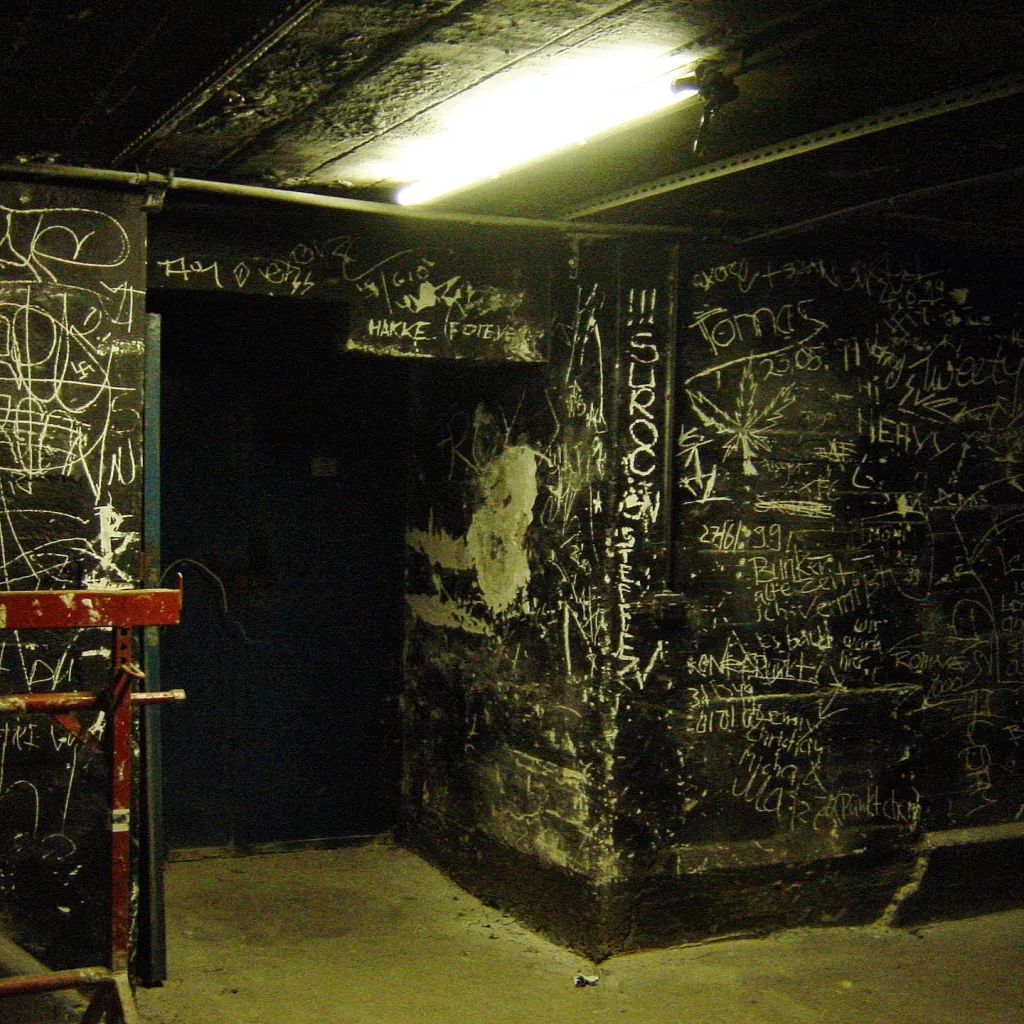
By the late ’90s, word had spread beyond the bunkers. What started as a closely guarded secret began attracting attention from the wider electronic music community. Major clubs started incorporating hard techno into their programming, though often relegated to specific nights or rooms.
This growing popularity led to an interesting seperation. While some purists retreated further underground, others saw an opportunity to spread their message to a broader audience. This tension would become a defining characteristic of the scene, driving innovation while maintaining its core values.
The Global Pulse: International Impact
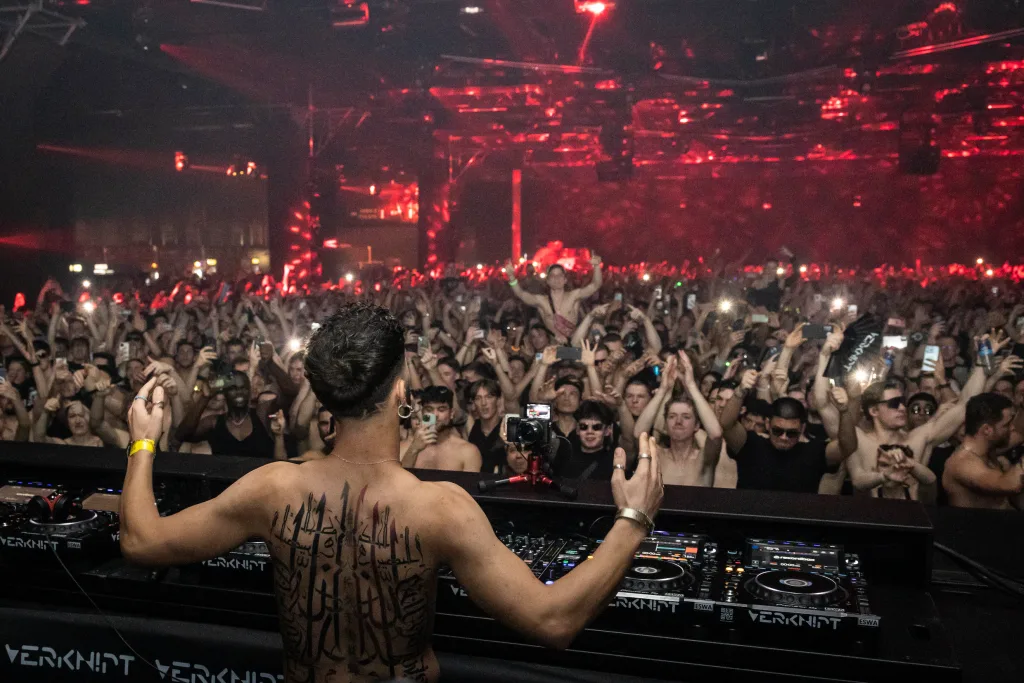
As we entered the new millennium, hard techno began to resonate globally. The Evolution of Hard Techno was ongoing. Different regions started developing their own interpretations of the sound. The Netherlands infused it with elements of gabber, while the UK added its own industrial edge.
These regional variations enriched the genre, creating a diverse ecosystem of sounds and styles. Despite these differences, the core elements remained: raw energy, uncompromising production, and an unwavering commitment to pushing boundaries.
Festival Frontier: The Main Stage Evolution
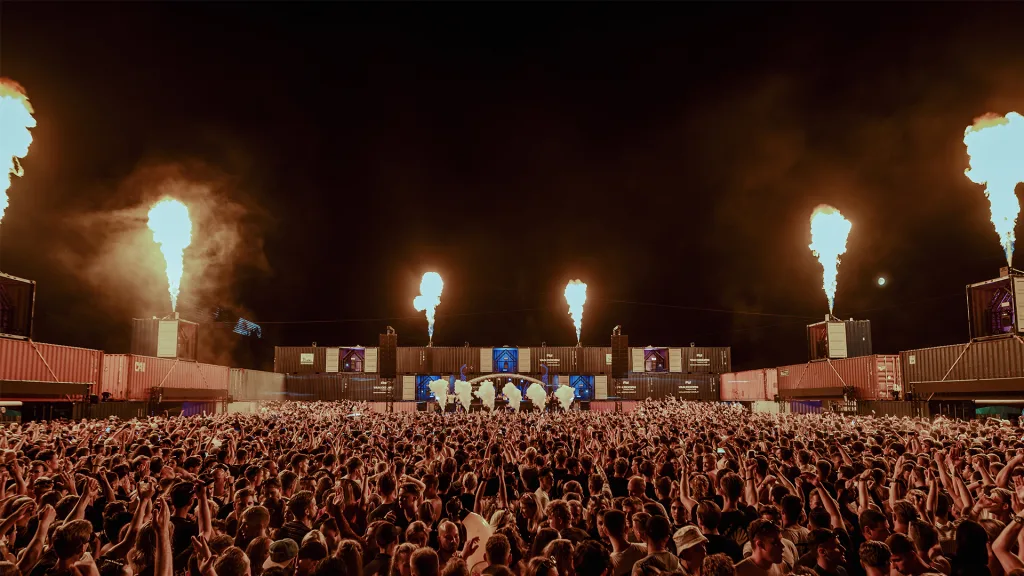
The most recent chapter in hard techno’s story has been its emergence on festival main stages. What was once confined to dark bunkers now moves masses under open skies. The Evolution of Hard Techno underground to mainstream has brought both opportunities and challenges for the scene.
Modern festivals have introduced hard techno to entirely new audiences, while technology has enabled productions that the pioneers could only dream of. Yet through it all, the essence remains unchanged. The connection between beat and body, machine and human.
The Pandemic Shift

During the lockdowns, producers spent countless hours in their home studios, experimenting and pushing the Evolution of Hard Techno. This period of isolation led to a fascinating development. Hard techno began absorbing elements from its more aggressive cousins: hardstyle and hardcore. When clubs finally reopened, the sound that emerged was noticeably harder, faster, and more intense than before.
The extended break from live events created a hunger for more extreme experiences. Ravers, after months of isolation, craved something more intense, more physical, and more relieving. This demographic shift brought younger audiences who were already familiar with hardstyle and hardcore, furthering the Evolution of Hard Techno in the scene.
The Hardcore Influence
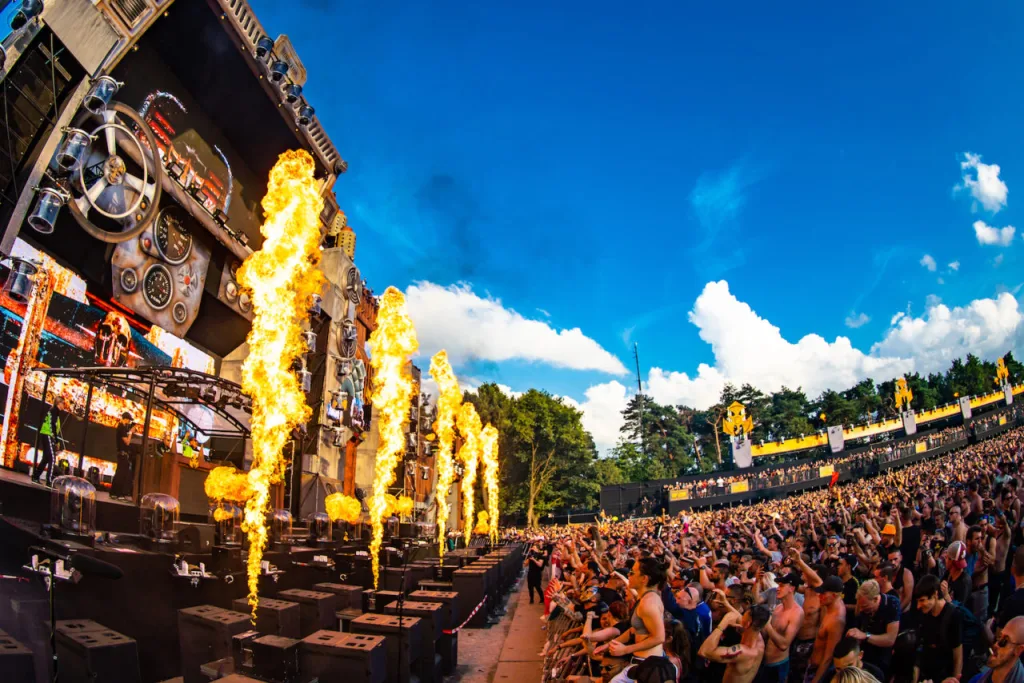
The most notable change is the adoption of hardcore style distorted kicks. Where traditional hard techno kicks were powerful but clean, the new wave embraces more distortion and complexity. You can hear this in tracks reaching 150+ BPM, featuring those signature ‘terrorcore’ moments that were once alien to hard techno sets.
Artists like DYEN, Inhalt der Nacht, Rebekah and VTSS have been at the forefront of this evolution, fearlessly incorporating hardcore elements while maintaining techno’s fundamental groove. This fusion has created a new sub-genre some call “nuclear techno” or “apocalyptic techno.”
The Hardstyle Connection
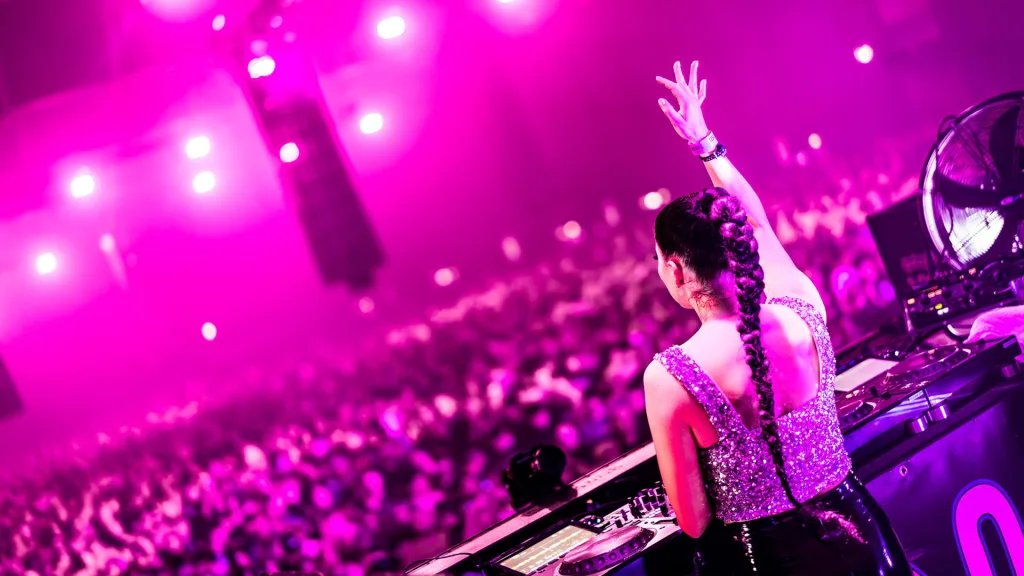
Hardstyle’s influence is evident in the increased use of melodic ‘screeches’ and reverse bass techniques. The genre’s signature lead sounds have been recontextualized within techno frameworks, creating a unique hybrid. Events like Exhale and HATE are regularly featuring sets that blur these genre boundaries.
The production quality has also evolved, with many producers adopting hardstyle’s approach to sound design – particularly in kick drum production and the use of dramatic builds and drops. The result is a more dynamic, high-energy form of hard techno that maintains its underground credibility while borrowing from hardstyle’s theatrical elements furthering the evolution of hard techno.
A New Generation
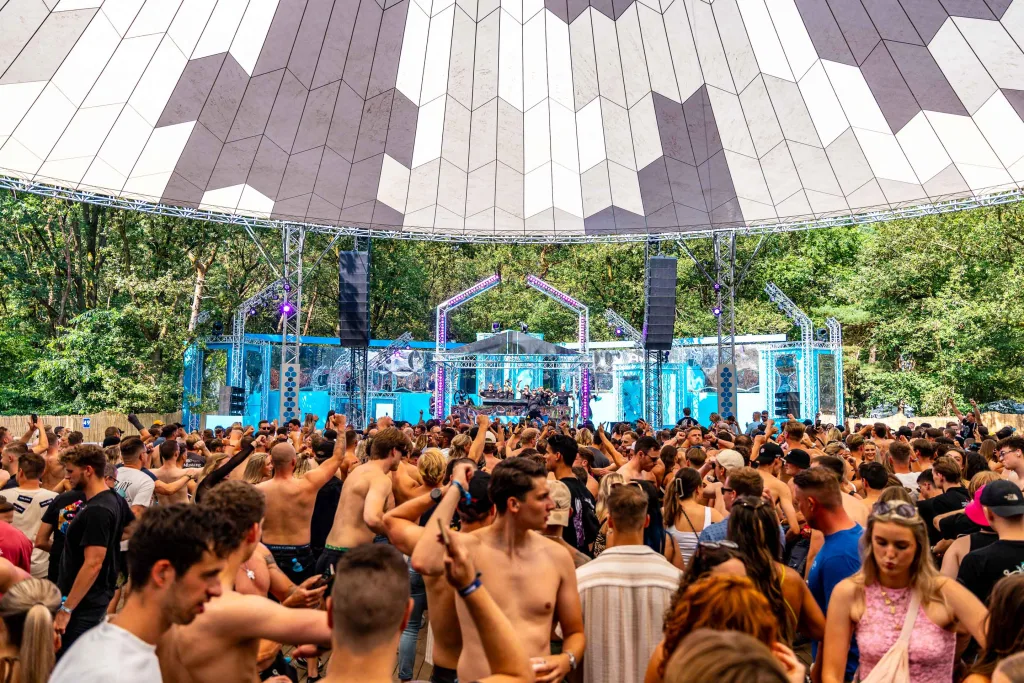
The post-COVID era has seen a surge in young producers who don’t feel bound by traditional genre constraints. They’re creating tracks that seamlessly blend elements from hard techno, hardstyle, and hardcore, reflecting their diverse musical influences.
This new generation of artists and listeners doesn’t see genre boundaries as barriers but as opportunities for innovation and evolution of Hard Techno. Social media platforms like TikTok have accelerated this cross-pollination, with viral clips often featuring the hardest, most intense moments from sets.
Hardtechno Artist Quotes
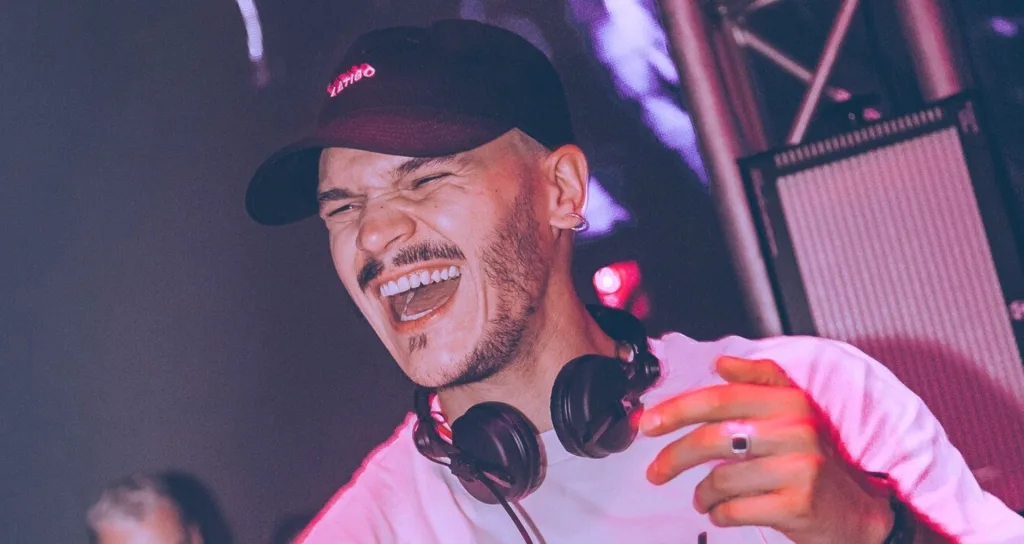
DYEN: “Post-COVID, people want something more extreme. The lockdown changed everyone’s perception of energy. When I play now, I can go harder than ever before, mixing techno with hardcore elements, and crowds just embrace it completely.”
VTSS: “The boundaries between genres are completely dissolving. One moment I’m playing industrial techno, the next it’s basically hardcore. The new generation doesn’t care about these old divisions – they just want intensity.”
Trym: “The sound has evolved to be more aggressive, more raw. We’re seeing BPMs that were unthinkable in techno just a few years ago. It’s exciting because we’re creating something entirely new, taking elements from hardstyle and hardcore but keeping techno’s soul.”
Inhalt der Nacht: “The pandemic changed everything. During lockdown, I started experimenting with harder styles, and when clubs reopened, I realized audiences were ready for this new fusion. They wanted something that matched the intensity of the times.”
999999999: “It’s not just about playing faster or harder – it’s about creating new textures and emotions. We’re taking the best elements from different genres and creating something unique. The post-COVID era gave us the freedom to experiment more.”
Sara Landry: “The younger generation coming to techno now has grown up with access to every genre. They don’t see barriers between styles, and that’s influencing how we produce and perform. The fusion with harder styles was inevitable.”
Industry Response
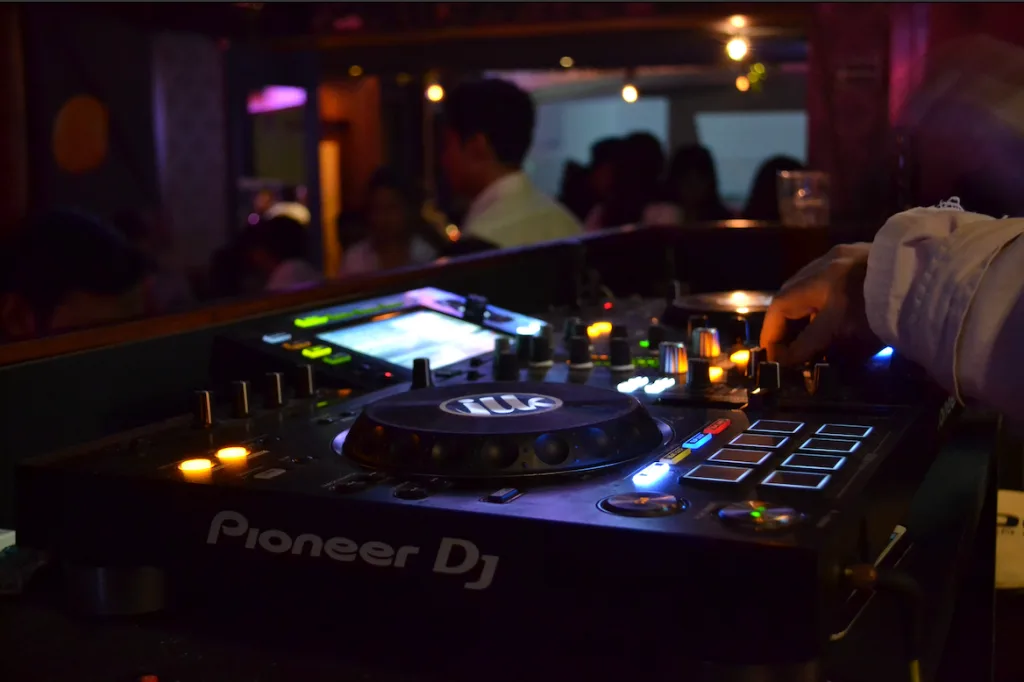
Labels and promoters have adapted to this evolution of hard techno. We’re seeing more mixed-genre events and releases that would have been unthinkable pre-COVID. Traditional techno labels are now releasing tracks that flirt with 160 BPM and feature hardstyle-influenced sound design.
This shift has also affected track releases and festival programming, with many major techno festivals now featuring dedicated harder stages or time slots. The industry has recognized that this harder, fusion sound isn’t just a trend but a significant evolution in electronic music.
Digital Democracy: Social Media’s Impact

Social media has dramatically transformed how hard techno spreads and evolves. Artists can now instantly share their work with global audiences, while fans can connect and share experiences in ways previously impossible.
This democratization has led to an explosion of creativity within the scene. New artists can emerge from anywhere, bringing fresh perspectives and innovations to the genre. The underground spirit persists, but now it has a global platform.
The New Wave: Contemporary Innovation
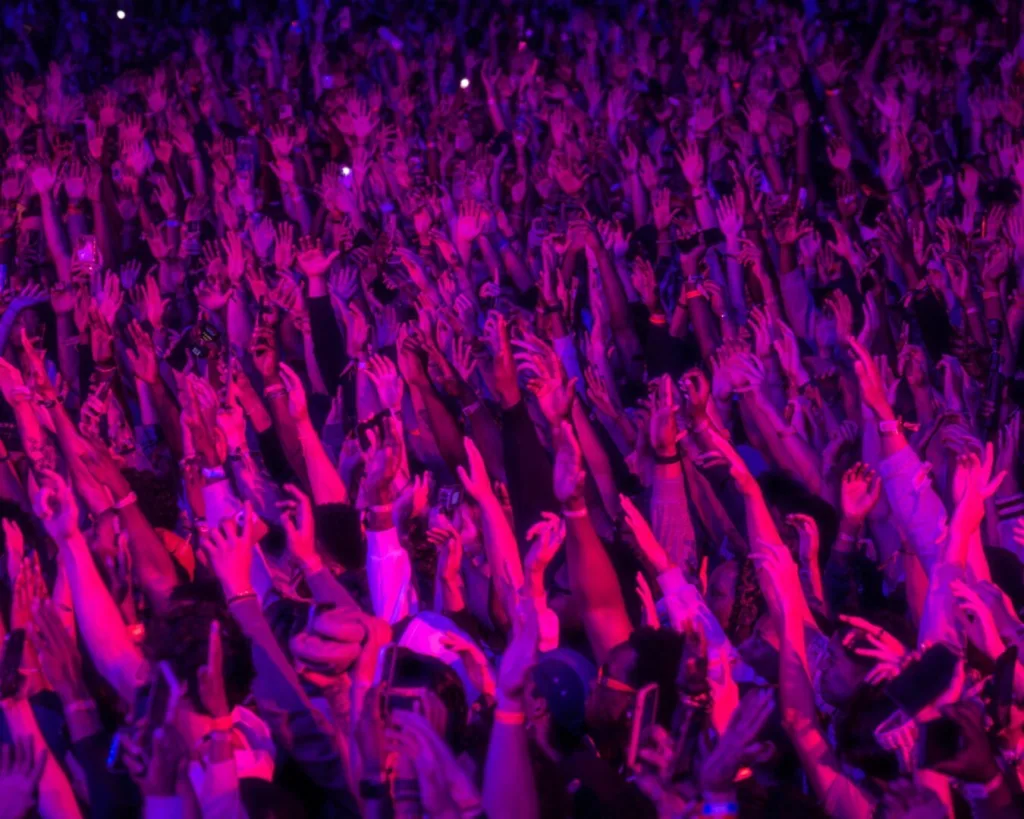
Today’s hard techno scene is more vibrant and diverse than ever. A new generation of producers and DJs is pushing the boundaries while respecting the genre’s roots. They’re incorporating elements from other styles, experimenting with new technologies, and finding fresh ways to express the raw energy that defines hard techno.
The sound continues to evolve, with sub-genres emerging and cross-pollination occurring with other styles. Yet somehow, the core remains unchanged that powerful connection between human and machine that first emerged in those Berlin bunkers.
Looking Forward
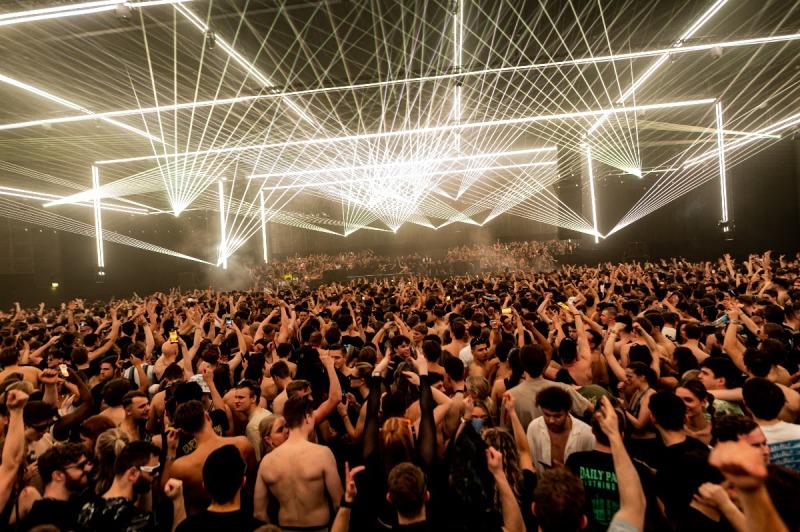
As we move deeper into the post-COVID era, the evolution of hard techno underground to mainstream shows has no signs of slowing down. If anything, it’s gaining momentum. The cross-pollination between hard techno, hardstyle, and hardcore continues to create exciting new possibilities and push boundaries for more evolution of Hard Techno.
The challenge now lies in maintaining this creative momentum while preserving the unique characteristics that make each genre special. As these styles continue to merge and evolve, we’re witnessing the birth of something entirely new. This is a testament to electronic music’s endless capacity for reinvention.
Yet if history has taught us anything, it’s that hard techno will continue to adapt and thrive. The spirit of innovation and rebellion that birthed the genre remains alive and well, ensuring its future while honoring its past.
FAQ About “The Evolution of Hard Techno”
What is the history of hard techno?
Hard Techno originated in the early 1990s in Europe, with roots in Germany and Belgium. It evolved from traditional techno and rave culture, characterized by industrial sounds and high tempos. Initially thriving in underground bunkers and warehouse parties, Hard Techno later gained global recognition at festivals for its intense and rebellious energy.
What are the characteristics of hard techno?
Hard Techno features aggressive beats, tempos exceeding 140 BPM, and industrial-inspired soundscapes. Its raw, repetitive rhythms are designed for high-energy environments, often emphasizing distorted basslines and minimal melodies. The genre’s focus on intensity and defiance makes it popular in underground scenes and large-scale festivals.
What is the hardest type of techno?
The hardest type of techno is typically Hard Techno or Schranz, known for its relentless energy and tempos that surpass 150 BPM. These styles incorporate harsh industrial sounds, distorted kicks, and raw, driving rhythms, setting them apart as the most intense forms of the genre.
What is the difference between hard techno and techno?
Hard Techno is faster and more aggressive than traditional techno, featuring tempos above 140 BPM and industrial influences. Traditional techno focuses on hypnotic rhythms, groove, and melodic elements, while Hard Techno emphasizes intensity and raw energy, catering to high-energy crowds.
Is hard techno early hardstyle?
No, Hard Techno and early Hardstyle are different genres. Hard Techno is rooted in 1990s industrial and rave scenes, emphasizing raw, fast-paced beats. Early Hardstyle emerged later, blending hard trance and techno with melodic elements and distorted kicks, creating a unique style.
Is hard techno real techno?
Yes, Hard Techno is a subgenre of techno. It builds on traditional techno’s foundation of looped beats and electronic soundscapes but amplifies them with faster tempos, industrial tones, and a more aggressive style, making it a distinct yet authentic part of the techno family.
What BPM is hard techno?
Hard Techno typically ranges from 140 to 160 BPM, with some subgenres like Schranz reaching even higher tempos. Its fast-paced beats and relentless energy are key characteristics, making it one of the most intense forms of techno.
When did hard techno start?
Hard Techno started in the early 1990s in Europe, particularly in Germany and Belgium. Emerging from the underground rave scene, it evolved as a faster, more aggressive offshoot of traditional techno, incorporating industrial and rave influences.
What is a hard techno personality?
A Hard Techno personality is often intense, energetic, and rebellious. Fans and artists of the genre embrace its raw, industrial sounds and fast-paced rhythms, thriving in high-energy environments and valuing creativity and non-conformity within electronic music culture.
What is the evolution of Hard Techno
Throughout its evolution, hard techno has maintained its core attributes of high energy and industrial aesthetics, continually adapting to technological advancements and cultural shifts within the electronic music landscape.
Stay Connected:
Stay updated with the latest in the hard techno scene by following us on social media to get article like “The Complete Evolution of Hard Techno”:
- Instagram:
- Facebook:
- Twitter:
Tags: #Hard Techno #Hard Techno Evolution #Techno Community #Techno # The Complete Evolution of Hard Techno
Related Articles:
- What is Hard Techno Livesets.
- What is hardtechno?
- What is a liveset?
- What is a DJ mix?
- Top 150 Hard Techno DJs list.
- Hardtechno DJ Set vs Liveset: What’s the Difference?
Subscribe!
Subscribe to our newsletter to get the latest hard techno livesets, artist news, and exclusive content like “The Complete Evolution of Hard Techno” delivered straight to your inbox.
Note: This article “The Complete Evolution of Hard Techno” is regularly updated to provide you with the latest insights and developments in the Hard Techno scene. Last updated on [14-12-2024].
Note: All images in “The Complete Evolution of Hard Techno” used are for illustrative purposes.
Written by Hatelise, a passionate electronic music enthusiast and hard techno aficionado dedicated to sharing the energy and excitement of the scene.
Need more hard techno in your life? Check out our curated playlists and let the music speak for itself.